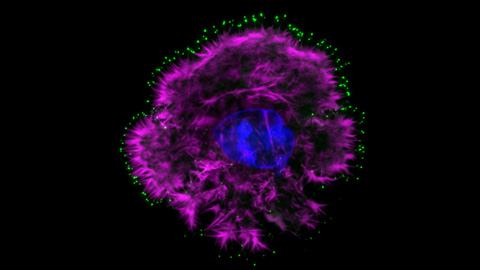Researchers at the University of Turku have identified a new way of blocking the spread of cancer.
Calcium channel blockers, which are used to lower blood pressure, block breast and pancreatic cancer invasion by inhibiting cellular structures.
By screening already approved drugs, the team led by Postdoctoral Researcher Guillaume Jacquemet and Academy Professor Johanna Ivaska has discovered that calcium channel blockers can efficiently stop cancer cell invasion in vitro. Calcium channel blockers are currently used to treat hypertension, also known as high blood pressure, but their potential use in blocking cancer cell metastases has not been previously reported.
Cancer kills because of its ability to spread throughout the body and form metastases. Therefore, developing drugs that block the ability of cancer cells to disseminate is a major anti-cancer therapeutic avenue. Developing new drugs, however, is a very lengthy and expensive process and many promising drugs fail clinical trials because of unanticipated toxicity and side effects. Thus, finding new targets for drugs already in use to treat other diseases, in other words drug repurposing, is an emerging area in developing anti-cancer therapies.
“Identification of anti-hypertension drugs as potential therapeutics against breast and pancreatic cancer metastasis was a big surprise. The targets of these drugs were not know to be present in cancer cells and therefore no one had considered the possibility that these drugs might be effective against aggressive cancer types,” says Professor Ivaska.
The team and their collaborators are currently assessing the efficiency of calcium channel blockers to stop the spreading of breast and pancreatic cancer using pre-clinical models and analysing patient data.
The findings were published in Nature Communications journal on 2 December 2016.
Original publication: L-type calcium channels regulate filopodia stability and cancer cell invasion downstream of integrin signalling. Jacquemet G, Baghirov H, Georgiadou M, Sihto H, Peuhu E, Cettour-Janet P, He T, Perälä M, Kronqvist P, Joensuu H, Ivaska J. Nat Commun. 2016 Dec 2;7:13297. doi: 10.1038/ncomms13297.
Photo: High-resolution microscope image of an invasive breast cancer cell (magenta) expressing Myosin-10 induced “sticky-fingers” (green).








